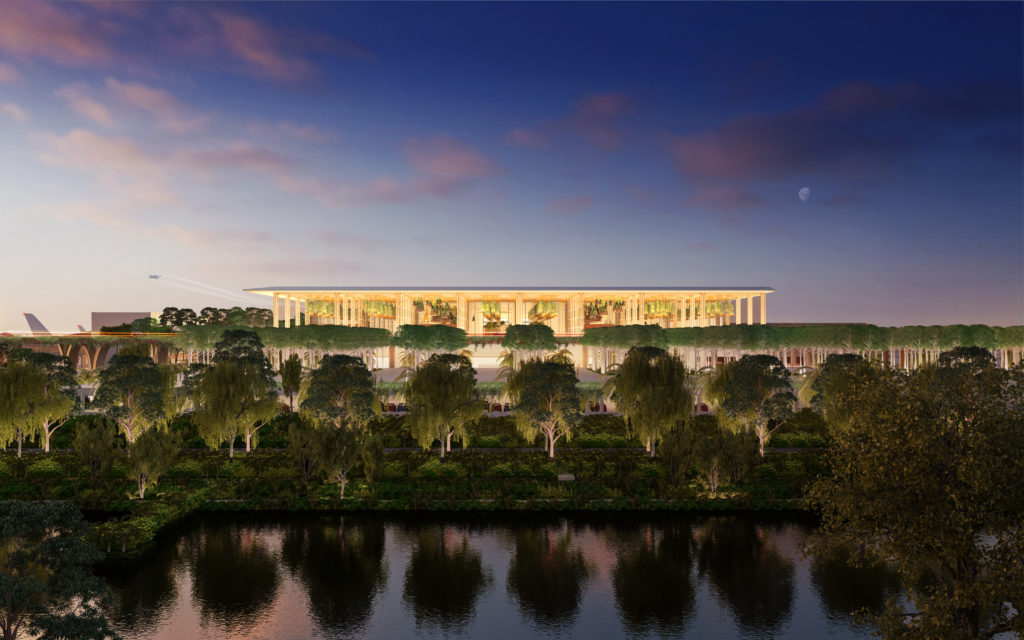Satyaki Raghunath, chief strategy and development officer, Bangalore International Airport, provides a masterplan update for Kempegowda International Airport, Bengaluru (KIAB), which hopes to handle 90 million passengers per annum by 2030, ahead of his presentation at Passenger Terminal CONFERENCE.
Describe your presentation.
The presentation will focus on the masterplan update for Kempegowda International Airport, Bengaluru (KIAB or BLR Airport). This will include development strategies to meet demand that will cater to 90 million passengers per annum (mppa), between 575,000 and 650,000 annual air transport movements (ATMs) and approximately 1.5 million metric tonnes (MT) of cargo, annually, somewhere between 2030 and 2035. In short, we will be the size of London Heathrow (LHR), currently on a similar two-runway system.
To meet this growth, BIAL is in the midst of a US$2.8bn expansion plan. This plan has multiple projects covering airside, terminal, landside and support infrastructure. We have just completed delivery of the New South Parallel Runway (NSPR or Runway 09R-27L) in December 2019. We are currently in the middle of the delivery of the first phase of our flagship project, Terminal 2 (T2), scheduled for March-April 2021. Terminal 2/Phase 1 (T2/P1) will be spread over approximately 255,000m2 and will increase annual capacity to approximately 55mppa. Additionally, as part of this expansion we are also delivering significant apron capacity, access road expansions, development of public transport corridors and infrastructure, utilities, landscape and support infrastructure.
Just how fast is BLR growing?
Over the past two years, we grew at over 20% annually and BLR Airport was the fastest-growing major airport in the world (over 25mppa). Due to the collapse of one of the largest Indian carriers, we will have modest single-digit growth on the domestic front this year; our international traffic has still grown in excess of 10% this year. We believe that despite challenges (coronavirus, airline industry headwinds in India, slower economic growth, etc), we will still reach 85-95mppa between 2028 and 2033.

Is it just a case of ‘pouring concrete’ or does technology have an important role, too?
Given our growth rate, in addition to the capital investment program outlined earlier, we cannot but invest in technology and digital transformation to meet demand-related challenges. We simply cannot build our way out of the problem. As a result, we embarked on a comprehensive digital transformation program a couple of years ago. Our digital transformation is focused on three key drivers: enhancement of customer experience, improved operational efficiency and increased revenue-generation opportunities.
To this end, we are delivering multiple platforms spread across four key areas: process automation, business intelligence and data analytics, customer engagement and biometric boarding. These are in various stages of delivery and will be largely complete by 2021-22. In addition, we are working on IoT use cases to integrate into the data analytics platform, various use cases on turnaround/airside management, the adoption of a community engagement platform, etc. All these projects eventually are expected to change the way we work and transform BLR Airport.
How does BLR’s masterplan intend to foster the development of an airport city?
The most recent masterplan update has created the opportunity for the development of a world-class airport city at BLR Airport. BLR’s airport city will be an international gateway to a sustainable, smart, vibrant city that celebrates BIAL’s culture of innovation. It has been developed on these principles to create a destination at the airport.
The development of the airport city at BLR Airport will be underpinned by three key principles of the city as a garden, the city as a street and the city as a celebration. Our vision is to create a unique and exceptional development at BLR Airport that will serve not only as the benchmark for airport city development, but also as an example of sustainable urban design.
You’ve previously worked in a similar role at Dubai – what are the essentials of good masterplanning, in your view?
The key to good masterplanning at airports is to keep two fundamental principles in mind: the need to retain flexibility and the ability to create capacity. The commercial aviation industry is dynamic and subject to various rapid changes. Airports are intrinsically long-term businesses, but airlines are generally focused on the short term.
As a result, it is important for airport masterplans to be developed in ways that allow the operator to provide adequate capacity, while being as flexible as possible. This is a delicate balance as the airport operator needs the ability to change course to the extent possible, while maintaining high levels of service and customer satisfaction. This is a particularly challenging ask in regulated environments like India where, despite the rapid pace of aviation growth, all capital investment plans need to be submitted to the Economic Regulator for approval before implementation.
As airports grow in size/scale, they really need to focus on access, utilities and support infrastructure as these are the key elements of growth. These are often overlooked for the more glamorous elements of runway, apron and terminal infrastructure. However, without the support facilities, airports cannot really service their customers and we need to pay close attention to this area.

